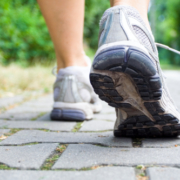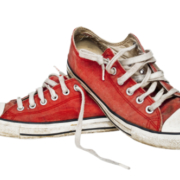Heavy Backpacks: Their Negative Effects & How Your Kids Can Avoid Them
/0 Comments/in Chiropractic, Health /by Dr. Kent FergusonSummer is ending and the school year is starting. Time for new shoes, haircuts, homework, and backpacks. As you do your back to school shopping, think about the backpack your child will be carrying. Sure, they load them up with books, but did you know that wearing a heavy backpack for a long time can actually hurt your child?
What are the health risks of a heavy backpack?
Wearing a heavy backpack can strain the shoulders, back, and neck. As the child’s body tries to compensate for the extra weight, such as leaning forward, it can adopt positions that put the spine out of alignment. It can also cause the muscles to fatigue and weaken. This results in poor posture and a misaligned spine.
The longer he or she carries the extra weight, the worse it gets. Over time, the child can experience pain, stiffness, and problems with flexibility and range of motion. This can significantly increase the child’s potential for injury. The effects may include back ache, sore or stiff neck, sore shoulders, and headaches.
How heavy is too heavy for a child’s backpack?
According to the AAP, a child’s backpack should weigh less than 10 to 20 percent of his or her body weight – and no more. However, a Consumer Reports survey showed that the lower end of the range, around 10 percent or less, is preferable. In short, the lighter the backpack, the healthier it is for your child. A good rule of thumb is to observe your child wearing the backpack. If they are stooped or leaning forward, it is too heavy.
Children who are shorter, as well as girls, may be more prone to back pain caused by carrying heavy backpacks. This means that for these children you need to aim for even lighter weights. Children who are overweight may also be at risk for injury. The excess weight already puts a strain on their joints and muscles; the heavy backpack exacerbates the situation.
Children who wear their backpack over one shoulder also increase their risk of injury. This puts all the weight on one side, causing the child to bend or lean in an effort to compensate for the off-kilter weight. This can strain the shoulder and back, eventually causing injury and pain.
Helping your child avoid carrying a heavy backpack.
If you notice that your child cannot stand up straight while wearing the backpack, then it is too heavy. You should inspect your child’s backpack on a regular basis to test the heaviness. When purchasing a backpack, aim for wide, padded straps that are adjustable. It should fit the child well and to be too big. The straps should not be too loose. You want it to fit close to your child’s body and should come to just below the waist – but not too far. Don’t allow your child to carry the backpack on one shoulder, encourage them to wear it on both shoulders. This distributes the weight more evenly.
If your child is carrying a heavy backpack, you may need to talk to their teacher to see what is necessary for him or her to carry daily, and what can be left at home or at school. Work together to find ways to lighten the load and avoid injury. Also keep in mind, your child may not bring your attention to the fact that their backpack is too heavy. It is up to you to observe and intervene for them. To learn more about our office check out www.ocwc.ca
Low Back & Leg Pain: How Chiropractic Helps Radiculopathy
/0 Comments/in Chiropractic /by Dr. Kent FergusonLow back pain affects millions of people each year and is the number one cause of disability worldwide. It is prevalent and can be debilitating. As patients search for relief, they soon find that not all lumbar pain is created equal. There are many causes and treatments vary widely depending on the issue. Radiculopathy is a condition that can contribute to lower back pain, but chiropractic care can help patients better manage it.
What is Lumbar Radiculopathy?
Radiculopathy is associated with some of the most significant causes of chronic or acute low back pain. However, it is important to note that the condition itself does not cause the pain. Instead, elements of radiculopathy, such as disc herniation, nerve root impingement, and facet arthropathy are actually what cause the pain.
Radiculopathy is a condition of the spine that occurs when a nerve is compressed, causing pain, weakness, tingling, or numbness along the nerve’s course. In the lower back, that course is in the leg. While it is most common in the lower back, radiculopathy can occur in the cervical or thoracic regions of the spine as well.
Symptoms of Lumbar Radiculopathy
The symptoms of lumbar radiculopathy include pain, tingling, and numbness in the legs. Some patients experience extreme, painful sensitivity to light touch.
The nerves in the lumbar region of the spine supply sensations to the buttocks and legs as well as control muscles. So, when a nerve is compressed in the lumbar spine, those are the areas that are affected. The condition is often called a “pinched nerve” or sciatica because of the way that the pain radiates through the buttock and into the leg.
Causes of Radiculopathy
Irritation or compression of certain nerves are what causes radiculopathy, but it is worth looking at the causes of this irritation or compression to see the deeper cause of radiculopathy. These may include mechanical nerve compression due to:
- Bone spur
- Disc herniation from osteoarthritis
- Thickening of surrounding ligaments
- Infection
- Tumor
- Scoliosis
Degeneration or trauma can cause inflammation in the spinal nerves which can lead to pain.
Who is at Risk for Radiculopathy?
Certain people are more prone to radiculopathy based on the activities they engage in and their genetics. Patients who regularly engage in contact sports, heavy labor, or any activity that puts a repetitive or excessive load on the back are more likely to have the condition. Patients who have a family history of spine disorders, including radiculopathy are also more at risk of developing it.
Chiropractic for Lumbar Radiculopathy
A review published in the Journal of Chiropractic Medicine examined 162 patients with radiculopathy who were treated with chiropractic care. Of those patients, more than 85% not only experienced pain relief, but their conditions were resolved. This was done over 9 treatment sessions. Most of the patients saw improvement of their symptoms within 4 days of their first treatment.
There are a number of treatments for lumbar radiculopathy, including pain medication, epidural steroid injection, and surgery. However, chiropractic care is non-invasive and does not have the unpleasant, sometimes harmful of many pain medications. It is safe and effective, treating the entire body instead of just the part that hurts.
When treating lumbar radiculopathy, the chiropractor may use several techniques such as spinal adjustments as well as stabilization exercise and neuromobilization. They will also work with the patient to determine if there are engaging in any activities that increase their risk factor for the condition. In some cases, the chiropractor may recommend certain lifestyle and dietary changes to increase whole body wellness and a stronger, healthier spine. For more information on our clinic and chiropractors, check out www.ocwc.ca
What Chiropractic Patients Want To Know About Text Neck
/2 Comments/in Chiropractic, Health /by Dr. Kent FergusonText neck is a very real condition that is caused by staying in a prolonged “texting” position – hunched shoulders and neck tilted forward. As a result, the back, neck, and shoulder muscles become overworked and your spinal structure is actually changed. Many people who spend a lot of time on their mobile devices such as smartphones and tablets, develop this condition (and others including “cellphone elbow” and tendinitis of the wrist and hand) and it can be very painful, even causing mobility problems.
What Exactly is Text Neck?
A normal human neck has a slight curve to it that travels along the spine. It is part of the intricate system that supports the head and body. However, a person with text neck will have a straight cervical spine. Their neck will not have that slight curve and that is a problem.
The cause of the absence of the curve is because of the position that the head stays in for such long periods of time. The average adult human head weighs between 10 and 12 pounds. When the head is upright, the neck supports it and the slight curve gives it the stability that it needs.
When you keep your head tilted forward, such as when you are hunched over your smartphone or mobile device, your head is thrust forward instead of sitting over the balanced curve of the cervical spine. The gravitational pull is greatly increased and the neck is already in an unnatural position. This combination places unnatural and damaging stress on your neck. It is like carrying around an additional 60 pounds on your neck.
Symptoms of Text Neck
In the early stages of text neck, a person may feel some tightness in their shoulders, neck, and upper back. This may progress to discomfort in those areas and eventually pain. If left untreated, you can develop pinched nerves and herniated discs.
Your central nervous system begins at the base of your skull, so it extends down your neck and upper back. When you put unnatural pressure on your neck, you are also affecting your nervous system, causing it to malfunction. This can lead to pain throughout your body, stiffness, headaches, low back pain, and problems with your hands and arms.
How to Prevent Text Neck
Text neck is surprisingly easy to prevent. Your first step is awareness. Over two or three days, take some time to be very aware of your body’s position. Carefully examine your posture while you go about all of your daily activities. It is important to remember that text neck is not strictly confined to texting. You can get it any time you have your head bent down for an extended period of time, such as when looking at a laptop screen or even writing for a long time.
The best way to avoid the problem is to keep your devices at eye level. If you have a handheld device, hold it up at the level of your eyes instead of bending your neck to look down. The same goes for your laptop; arrange it so that your screen is at eye level.
Chiropractic for Text Neck
If you are already suffering from the effects of text neck, your chiropractor can help reverse the condition if it hasn’t progressed to disc degeneration (even then he or she can help with associated pain). Regular chiropractic treatments, along with following expert recommendations for screen heights, can help reduce the pain and discomfort. It is smart to address these issues before they become a bigger problem. Your chiropractor can help. Learn more about our clinic @ www.ocwc.ca
What Chiropractic Patients Want To Know About Curcumin
/0 Comments/in Chiropractic, Nutrition /by Dr. Kent FergusonMany chronic pain sufferers are looking for relief beyond pharmaceuticals which can have unpleasant and even harmful side effects. This has brought them to natural pain management methods like chiropractic care as well as natural substances like curcumin. For many people, these treatment options have brought them relief from the pain and help them return to a more normal lifestyle.
How does it work though? And, more importantly, can it work for you?
What is Curcumin?
Curcumin is a spice that is a relative of ginger and is a component of turmeric. Often the terms curcumin and turmeric are used interchangeably. However, curcumin is what gives turmeric its bright yellow color.
While it is often found in curries and other traditional Indian food, it has also long been used to treat a variety of health issues including inflammation that causes pain in the body. These claims have been backed up by several studies that show the tasty spice has tremendous health benefits to offer.
These studies have shown that curcumin has strong anti-inflammatory properties although why it works is not yet completely understood. This information has prompted further studies to determine the efficacy of curcumin in treating a wide range of conditions including chronic pain.
One study examined the spice’s effects on people suffering from arthritis or joint pain. The results determined that turmeric extract (curcumin) supplements were just as effective as ibuprofen in relieving the pain in patients with knee osteoarthritis. It helped to reduce the inflammation that was causing the pain, bringing the patients much needed relief.
Taking Curcumin for Better Health
You can get curcumin or turmeric supplements but there is no standard dosage information available. Your chiropractor can advise you on how much to take and which supplement brands are the best.
You can also use the spice in the foods you eat and gain a good bit of the health properties that way. However, it may be more efficient and easier to take curcumin or turmeric supplements, especially when you are treating inflammation and pain.
Curcumin is generally safe with very few side effects. As with any medication or supplement, there are some people who are sensitive to the spice and may experience diarrhea and nausea.
However, that usually occurs at higher doses or after the patient has been using it for a long time. High doses could also pose a risk if the person has ulcers. It can also irritate the skin is used topically.
If you are considering incorporating curcumin into your daily diet as a health supplement, you should first talk to your doctor or chiropractor to make sure it is safe for you. Women who are pregnant or nursing should not take the supplements.
People with conditions like diabetes, gallbladder issues, bleeding disorders, kidney disease, or immunity problems should take special care when using the supplement. Also, it can interact with medications like NSAIDs, aspirin, diabetes drugs, statins, blood thinners, and blood pressure medications so talk to your health professional before taking. They may adjust your dosage or recommend certain nutritional therapies to better support the supplement.
Your chiropractor can help you live a more natural, pain free life and supplements like curcumin may be a part of that plan. They can help put you on the path to a life well lived. To learn more about our office check out our website @ www.ocwc.ca
How Chiropractic Benefits Cyclists
/0 Comments/in Chiropractic, Health /by Dr. Kent FergusonCycling is a great cardiovascular workout, building strength, stamina, and balance. However, it can be tough on the body, especially if you put in a lot of miles. This is true of any activity that is repetitive, though. Certain muscles can become more tense and others that aren’t used become weaker. This can cause your spine to become misaligned. Bending over the handlebars can also cause back pain as well as wrist, neck and shoulder pain and affect your posture if you remain in that position for long stretches or are not using proper form. Chiropractic for cyclists can help combat these effects and keep your body in alignment.
Hip and Knee Pain
Cycling puts a lot of strain on your lower body, particularly the hips and legs. The more developed these muscles get, the tighter they can become if you aren’t stretching before and after your ride (and getting regular chiropractic care).
Inflammation and stiffness of the sacroiliac joint is very common with cyclists. It can cause a significant decrease in range of motion and flexibility, not to mention cause pain. This issue can really affect your ride. The stress that occurs in this area can affect nearby large joints, such as the knees. Chiropractic can release those joints and address any issues associated with it.
Lower Back Out of Alignment
Spending a lot of time hunched over your handlebars can cause your back muscles to become stretched out. When you combine that with hunching over a desk or computer all day, it can leave you with a misaligned spine.
The tight muscles of the lower body, including hip flexors and hamstrings, work against the stretched out back muscles to weaken the spinal support. Once your spine is misaligned, it can lead to back pain, hip pain, and make it difficult for you to ride effectively or comfortably.
Getting good, regular chiropractic adjustments, along with some core strength exercises, stretching, and exercises to increase range of motion, you can get your spine aligned – and keep it that way. It is also worth mentioning that proper bike fit is absolutely integral to keeping your spine and body healthy and aligned.
Numb, Tingling Hands
Numb, tingling hands are very common among cyclists. There are several reasons that this can occur, but the most common culprits are stress on the upper back from riding in a hunched position, or wrist issues that come from the stress of supporting your upper body as you are hunched over, and from holding the handlebars.
Proper bike fit can go a long way in preventing this, as does maintaining proper form and technique while riding. This will help you avoid compression, undue stress, and overreaching so that your arms are in a more natural, comfortable position. Your chiropractor can help alleviate the pain and correct the condition with spinal manipulation and other techniques applied to the joints.
Chiropractic is exceptional for cyclists because it not only addresses structural issues in the body, it also provides whole body care. Your chiropractor may recommend certain exercises and stretches, supplements, and lifestyle changes to help improve your ride and help you live a healthier life. You will combat the strain that the sport puts on your body and learn powerful techniques for avoiding injury.
If you are a regular cyclist, whether you ride competitively, ride with a group, or bike to work, you will find that your body will respond very well to chiropractic treatments. When performed regularly, you will find that your body will get stronger and your posture will be better. You will feel better too. To learn more about our office check out our website @ www.ocwc.ca
3 Health Benefits Walking Provides To Your Spine
/0 Comments/in Chiropractic, Chiropractic Blog /by Dr. Kent FergusonYou hear a lot of people talk about the benefits of walking, but may not know how it applies to you. If you have back pain, walking regularly can be exceptionally helpful by providing the spine with added support and increased blood flow. These three spinal health benefits of walking should be enough to convince you.
Walking Aids in Rehydrating Your Spinal Discs
Gravity is not your friend. Well, not when it comes to your back. From the time you get out of bed until you lay down again at the end of the day, the pressure of gravity compresses your spine. When your spine is compressed that means your spinal discs are too. These fluid filled discs provide cushion for your vertebrae, but the constant compression that occurs throughout the day due to normal activity squeezes out the fluid out of them.
Dehydrated discs can cause back pain and structural problems. That is why restful sleep and staying hydrated are extremely important for spinal health.
Walking is also important because it increases circulation throughout your body, including your spine. This increased blood flow helps to rehydrate your discs which improves your spinal health. It also helps keep your spine younger, staving off the effects of the aging process.
Walking Relieves Back Pain and Reduces Stress to the Spine
Walking provides a great low impact aerobic workout. It increases blood flow which helps improve mobility, flexibility, and range of motion. When you incorporate stretching, you can reap even more of the benefits of a healthy spine.
The human body is made to move. When you don’t move or are sedentary, your muscles become stiff and inflexible. Moving prevents that, but even if you are experiencing some stiffness walking, stretching, and movement can help you regain that flexibility.
You will also find that walking regularly also helps with stress relief. Lower back pain is a very common stress symptom but walking combats it effects by encouraging the release of dopamine.
When you are stressed, your pain sensitivity is increased. You feel pain more acutely and it is more difficult to manage. By reducing your stress level, you also make your pain more manageable but at the same time, minimize lower back pain.
Walking Improves Posture
When you don’t use your muscles, they become weak and inflexible – and are not able to do their intended job. The muscles of the back are designed to provide support to the spine. When they are not used they can atrophy and weaken, resulting in stooped or other improper posture.
Poor posture causes back pain by putting more pressure on the spine. This can lead to pain, soreness, tension, and headaches. Without the necessary support, it can also lead to misalignment of the spine which can cause a number of problems.
Walking strengthens the supporting muscle groups so that your back muscles get stronger. Your spine gets the structural support that it needs. As your back muscles get stronger your body will naturally begin to adopt a correct posture. The benefits of good posture include improved organ function, reduced pain, less fatigue, and easier breathing.
Walking is good for your whole body as well as your mind. When you walk to reduce back pain you are also doing great things for your body. If you have any questions about proper form or how to achieve better, healthier posture, your chiropractor can help you. The spine is such an important part of the body; it does so much. Do your best to protect it and keep it in good health. In return, it will keep you moving for a long, long time.
How the Shoes You Wear Can Wreck Your Spine
/0 Comments/in Chiropractic, Chiropractic Blog /by Dr. Kent FergusonIf you’ve been experiencing lower back pain and can’t seem to pinpoint the cause, try looking down – at your feet. What kind of shoes are you wearing? Your shoes can have a tremendous effect on your spine, causing back pain. While this is traditionally considered to be a “female issue,” some men’s shoe styles are unsafe as well. Take a look at the most common culprits and find out how you can be safely shod.
The Truth About High Heels
Wearing high heels puts your body in a position that is very similar to walking on a ramp. It causes your calf muscles to stay in a constantly flexed position and increases fatigue throughout the lower body. What’s worse, though, is that high heels cause your entire posture to change, they:
- Thrust your chest forward
- Push your lower back forward
- Tilt your pelvis up so the spine and hips are out of alignment
- Put excessive pressure on the knees
- Tendons get thicker and calf muscles get shorter
- Shift your weight to the balls of your feet with increased downward force pressure
- Extended regular wear can actually cause your anatomy to change
Wearing high heels for even a few hours can cause lower back pain. Wearing them on a regular basis can have a detrimental effect on your body. This does not even take into account the increased risk of falls and twisted ankles.
Why Flip Flops are a Flop
Flip flops are a popular summer shoe. They are easy to slip on and take off, they’re cool, and fairly comfortable. Most even stand up to getting wet without damage. However, you may be sacrificing your safety and spine health for choosing these easy to wear shoes.
The biggest problem is, they do not offer any ankle or foot support – none at all. The cushioning is minimal at best and they aren’t really secure on your foot. All of this leaves you vulnerable to trips and falls – a leading cause of injury and death in the United States. It also leaves you vulnerable to back pain and spinal injury.
There are several problems with wearing flip flops, especially on a regular basis:
- You have to unnaturally shorten your stride
- You have to curl or pinch your toes to keep your shoes on while you walk
- Your foot contacts the ground in an unnatural way that causes your leg to rotate slightly
All of these things put pressure on your spine, causing unusual strain on your hips, knees, feet, and lower back. It can cause muscular pain and strain, but it can also cause a misalignment of your spine.
So, are Flat Shoes Better?
When compared to high heels, flat shoes are much better, especially when it comes to posture. Flats keep your spine pretty straight and your calf muscles are relaxed. They also help to distribute your body weight more evenly through your whole foot as opposed to pushing it to the balls of the feet. However, not all flat shoes are created equal. For instance, flip flops are flat, but we know that they are bad for your body, so be careful when choosing your flat footwear.
10 Tips for Spine Friendly Shoes
Keep these tips in mind when looking for back friendly shoes:
- Throughout the course of the day your foot naturally expands. Go shoe shopping in the afternoon to get a more accurate fit.
- Get your feet measured every time you buy shoes.
- Always try on new shoes, walk around in them and stand.
- When determining length and width, do it while standing.
- Look for shoes that provide foot support and have an arch support.
- Don’t get shoes that are too wide or too narrow – or too long or short.
- Look at both size and width. Going up a half a size may not necessarily mean a shoe is wide enough if the shoes you are trying on pinch.
- Speaking of size, let it be a guide, not a rule. Gauge your shoe size by your comfort, not a number.
- Feel the insides of the shoes, along the heel and down to the toe to make sure that there are not seams, tags, or anything else that will affect your comfort or rub your foot.
- Check the shoe for sturdiness and soundness. Is the sole thick? Does the sole adhere well to the shoe (no gaps or loose spots)? Is the shoe made from durable, quality material?
Shoes are not accessories, they are tools that help protect much more than just your feet. Wear them well.
For more health and wellness information visit www.ocwc.ca
3 Tips That’ll Save Your Back While Gardening
/0 Comments/in Chiropractic, Chiropractic Blog /by Dr. Kent FergusonGardening is a favorite warm weather activity for many people. Unfortunately, it can often send them straight to the chiropractor with back pain and stiffness. If you enjoy your garden but your back doesn’t, take heart. An estimated 80% of the population has experienced back pain or will experience it at some point in their lifetime. It is common, but it doesn’t have to keep you from doing the things you enjoy. There are some fairly simple things you can do to make it easier and less painful.
Stretching is a good way to prevent back pain for nearly any activity. The more limber you are and the more warmed up your muscles are, the more comfortable you will be while you are gardening and afterwards.
Stretches for gardeners aren’t all that different from stretches for other activities. You need to address your hamstrings, triceps, and of course your back. Then you will be ready to get in the dirt and do what you love.
Use Back Friendly Tools and Gardening Methods
It may feel wonderful to get close to the dirt as you dig, breathing in its earthiness, feeling at one with nature, but your back likely does not hold the same appreciation. You can mix it up a little, but allow at least part of your gardening time to the use of tools that are “back friendly.”
Long handled and telescopic tools allow you to do your garden work without overworking your back. This is also great for people who don’t have full range of motion in their backs or who have trouble getting up and down.
Another back saver is a raised container garden. This will put your garden within easy reach, saving you from trying to get on the ground or, worse, feeling like you have to forego a garden because you can’t get around like you once did.
You can set the containers at whatever height you choose and include benches and seats for more comfortable gardening. If you do get on the ground, knee pads or a mat can help reduce some of the stress and prevent some pain.
Change Your Position Frequently
It’s easy to get in the zone and lose track of time, only for your body to remind you when you try to move and are met with painful stiffness. Carry a small timer with you and set it so that you are reminded every 30 minutes to stop, walk around, and stretch a little. This not only prevents pain and stiffness, it also helps with your circulation and blood flow, even digestion.
You can also vary your garden tasks so that you don’t over-tax a single muscle group. You may weed for a while, then move to your potting bench for a while or pruning trees or shrubs. It isn’t good to stay in one position for too long no matter what you are doing. A physical activity like gardening, though, requires more movement.
Take Care when Bending, Reaching, and Lifting
Gardening involves a lot of reaching, bending, and lifting. When you don’t do it correctly you would wind up with a sore back – or worse.
To lift: Don’t bend at your waist. Squat, grasp the object with both hands while pulling it close to your body. Straighten your legs slowly, letting those muscles to the work of lifting. You may also use a dolly, wheelbarrow, or wagon to move heavy items around and minimize the need to lift them.
Push: Pushing doesn’t strain the back as much as pulling does. Push your seeder, wheelbarrow, and lawnmower and try to avoid pulling as much as possible.
Reaching: Be careful when you reach, especially if you are reaching to lift. Even something that doesn’t weigh much can throw off your balance or cause you to twist your back. Try to minimize lifting while reaching as much as possible.
Bending: Keep your knees soft when you bend and try bending from the waist. If you are doing a task that requires bending, take frequent breaks where you can stand upright. If you bend to lift, make sure you use proper lifting techniques.
Gardening can be wonderful for mind, body, and spirit. It can also be painful if you don’t take the necessary precautions. When you go out to tend your plants, remember these back-saving gardening tips. Your back will thank you.
Happy Gardening! Visit www.ocwc.ca for more health and wellness tips and information.
Why Construction Workers Need Chiropractic
/0 Comments/in Chiropractic, Chiropractic Blog /by Dr. Kent FergusonEvery day construction workers lift, stoop, bend, reach, push, pull, twist, and climb. It’s no wonder that 25% of construction worker injuries are to the back. An estimated 1 in every 100 construction workers misses work because of a back injury with an average of seven missed work days. Many just power through the pain which isn’t healthy and can lead to further injury and pain. Repeated back injury and failure to take care of the back by taking proactive steps to prevent injury, can lead to permanent damage, even disability. That can end a construction worker’s career.
Chiropractic care can help keep the spine healthy so construction workers can stay on the job and be pain free. Regular treatment can offset the stress that is put on the body each day in this rigorous, physically demanding profession. There are several benefits that a construction worker can gain from seeing a chiropractor on a regular basis.
It helps to maintain mobility
When muscles are stiff and sore, it is natural to try to avoid moving too much. When a person has pulled muscles or they have muscle strain, their first instinct is to protect that area. This can lead to stiffness and lack of mobility, especially if the pain is in the back. A painful lower back can make it difficult to move your legs, bend, or even move about normally. Chiropractic helps to relieve the pain and reduce the stiffness so that mobility is restored.
Range of motion is improved
Stiffness can lead to a limited range of motion. If the spine is out of alignment, it can decrease flexibility and significantly limit the joint’s range of motion, whether it’s the back, shoulders, legs, or neck. Chiropractic brings the spine into the correct alignment which improves range of motion.
Chiropractic helps to relieve back pain
Studies show that chiropractic is very effective in relieving back pain. It can significantly decrease the pain, but in most cases it completely alleviates it.
In one study, 73% of the participants reported an improvement in their back pain. This means fewer missed days of work and much more productive on the job. This is one of the most common reasons that people seek chiropractic care, but it isn’t the only reason. It can help with so much more.
Corrects muscle imbalance
Workers who perform repetitive motions can experience muscular imbalance. This means that some muscles are tight (the ones being used) and others are not being worked as hard. It can cause pain in the area of the muscle as well as in other parts of the body.
A chiropractor can perform a technique called myofascial release to loosen the tight muscles. At the same time, they will recommend exercises for the muscles that don’t get worked as often so that the body can come back into balance. Muscular imbalance can also cause spinal misalignment so the chiropractor will also do an adjustment to bring the whole body back into balance.
Helps the body heal from injuries
Construction injuries are fairly common on a worksite. Most are fairly minor and tend to be ignored by the person until they are in so much pain they can’t function properly. Back strain is a common ailment among construction workers and it can put someone out of commission for a week or more.
Chiropractic care helps the body heal faster and more efficiently by focusing on the whole body instead of just the part that hurts. The patient receives the treatments at the chiropractor’s office then goes home with advice on lifestyle changes, supplements, and exercises to facilitate and speed healing.
For anyone in the construction industry, especially if their position is physically demanding, regular chiropractic care just makes sense. It keeps the spine healthy and the body moving as it should. It is a simple, natural, effective way to help the body function correctly – because pain is not normal.
Visit www.ocwc.ca for more health and wellness tips and information.
CONTACT US
OFFICE HOURS
MONDAY – THURSDAY
8:00am – 6:00pm
FRIDAY
8:00am – 4:00pm
SATURDAYS & EVENINGS
By appointment only
SUNDAY
Closed










